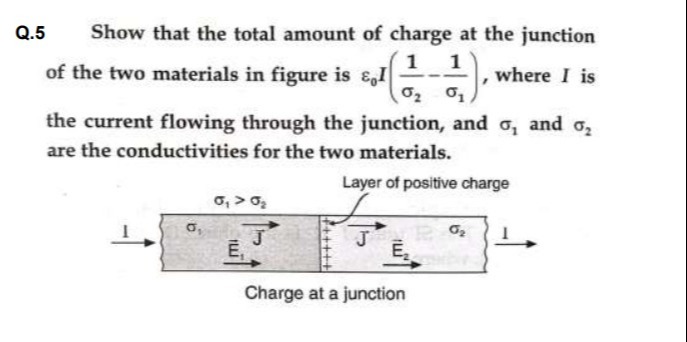Question
Question: Show that the total amount of charge at the junction of the two materials in figure is $\epsilon_0 I...
Show that the total amount of charge at the junction of the two materials in figure is ϵ0I(σ21−σ11), where I is the current flowing through the junction, and σ1 and σ2 are the conductivities for the two materials.

Q = \epsilon_0 I \left(\frac{1}{\sigma_2} - \frac{1}{\sigma_1}\right)
Solution
- Step 1: Express Electric Field in Each Material
Since the current I is continuous and the cross-sectional area A is the same, the current density is
J=AI.By Ohm’s law in differential form, J=σE, so the electric fields are
E1=Aσ1IandE2=Aσ2I.- Step 2: Find the Surface Charge Density
The discontinuity of the perpendicular component of E at the junction gives rise to a surface charge density σs via Gauss’s law:
σs=ϵ0(E2−E1).Substituting the values of E1 and E2:
σs=ϵ0(Aσ2I−Aσ1I)=ϵ0AI(σ21−σ11).- Step 3: Total Charge at the Junction
The total charge Q stored at the junction is the charge density multiplied by the area A:
Q=σsA=ϵ0I(σ21−σ11).Thus, the total amount of charge at the junction is
Q=ϵ0I(σ21−σ11).